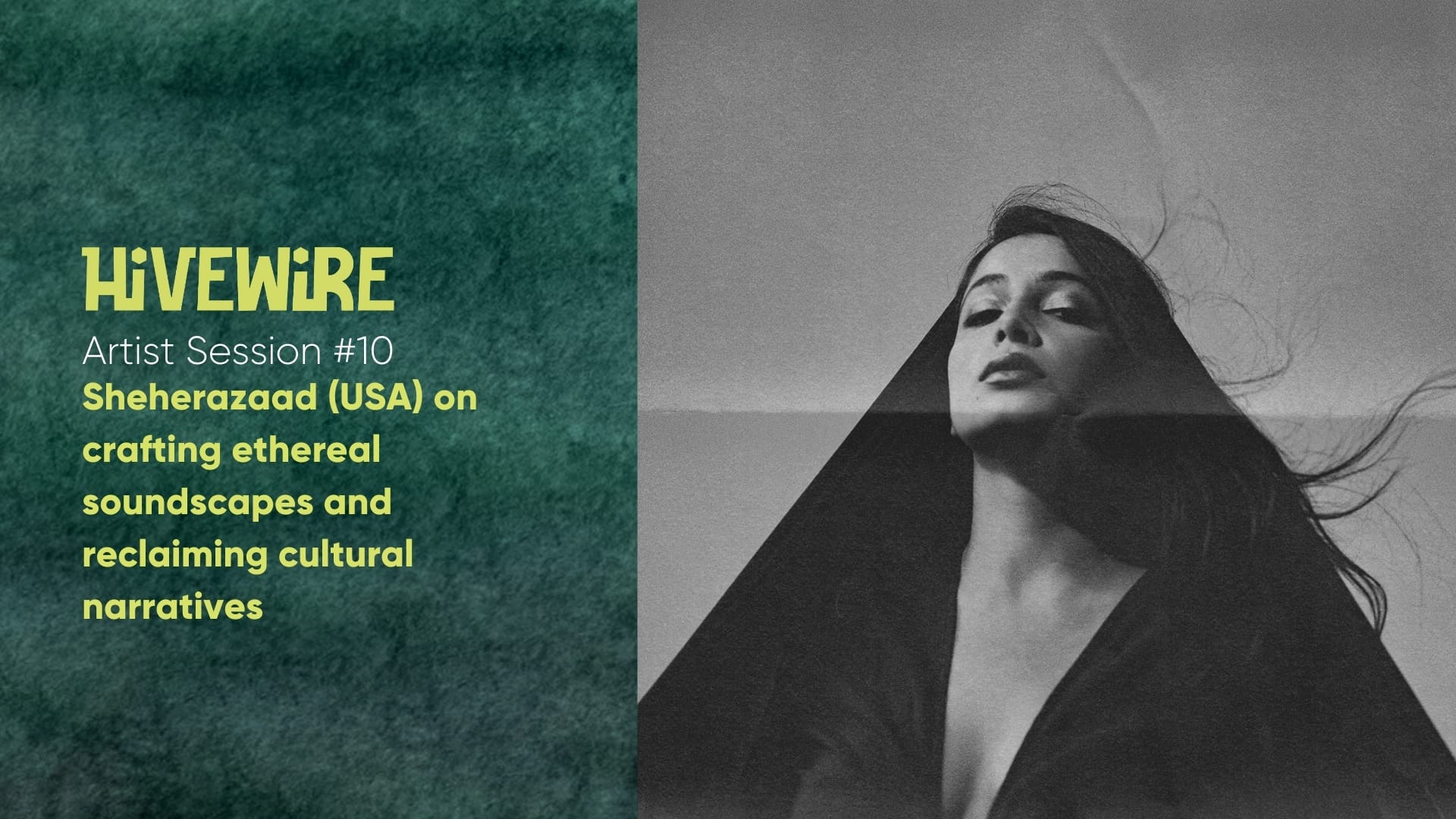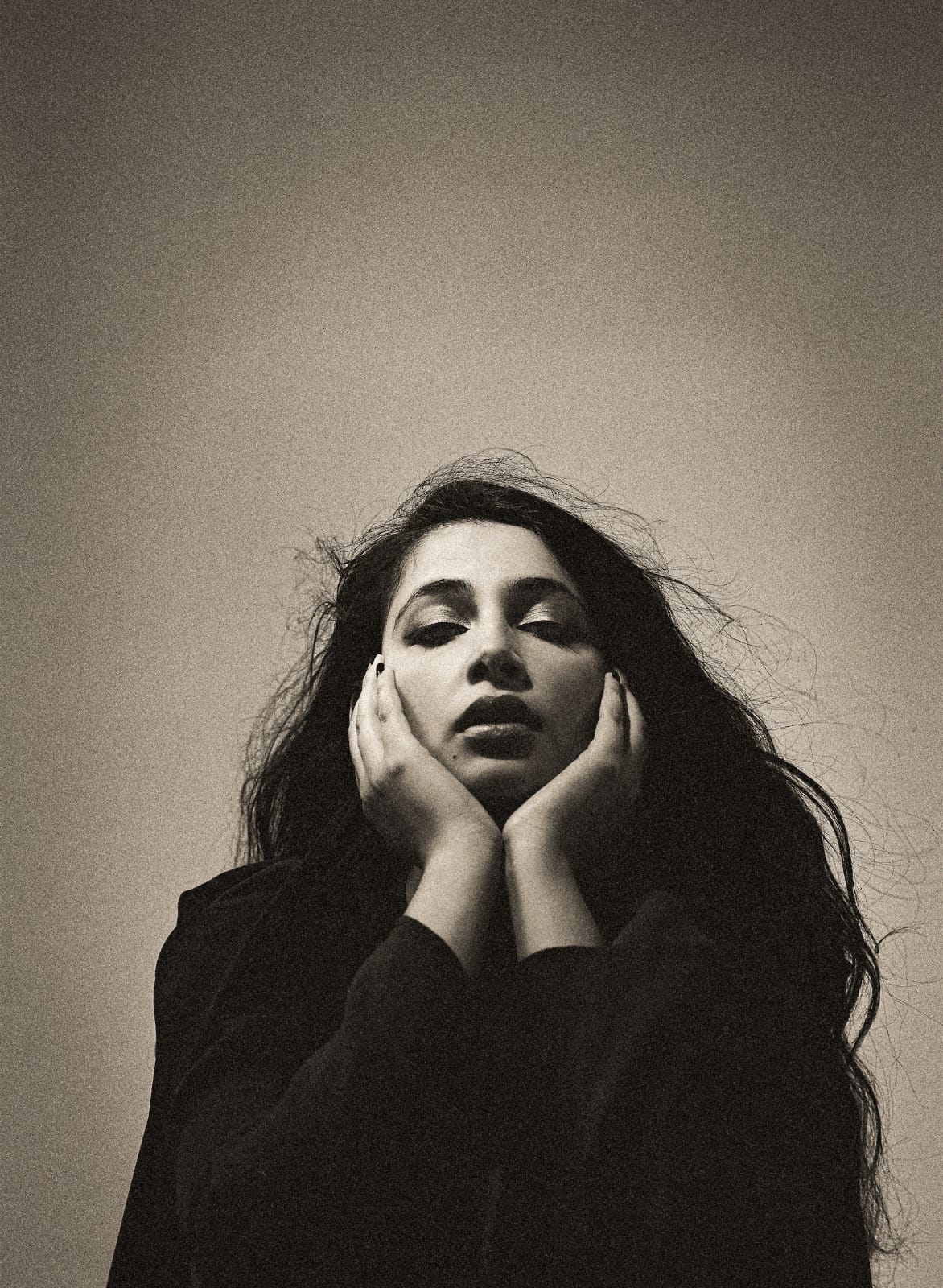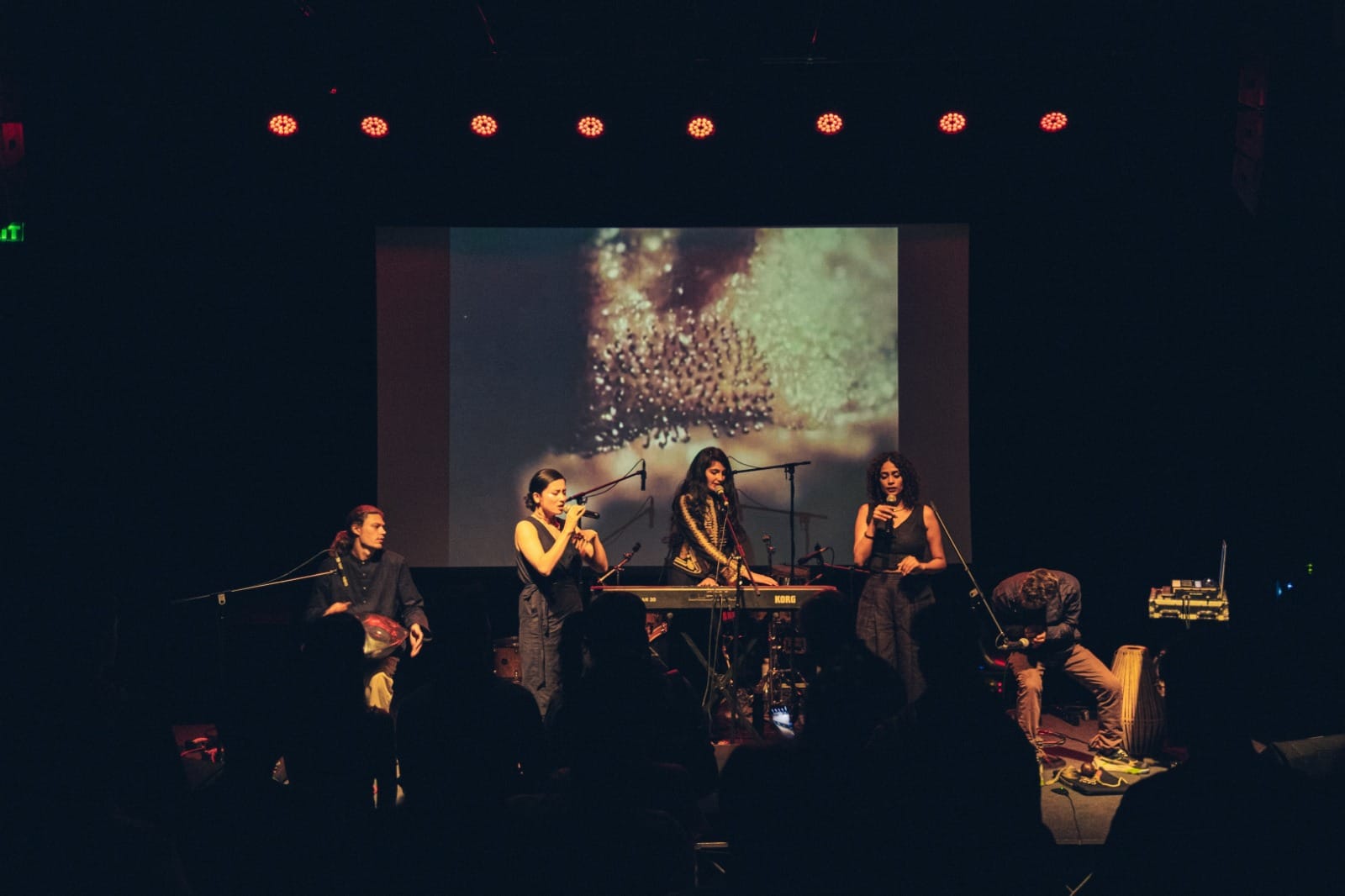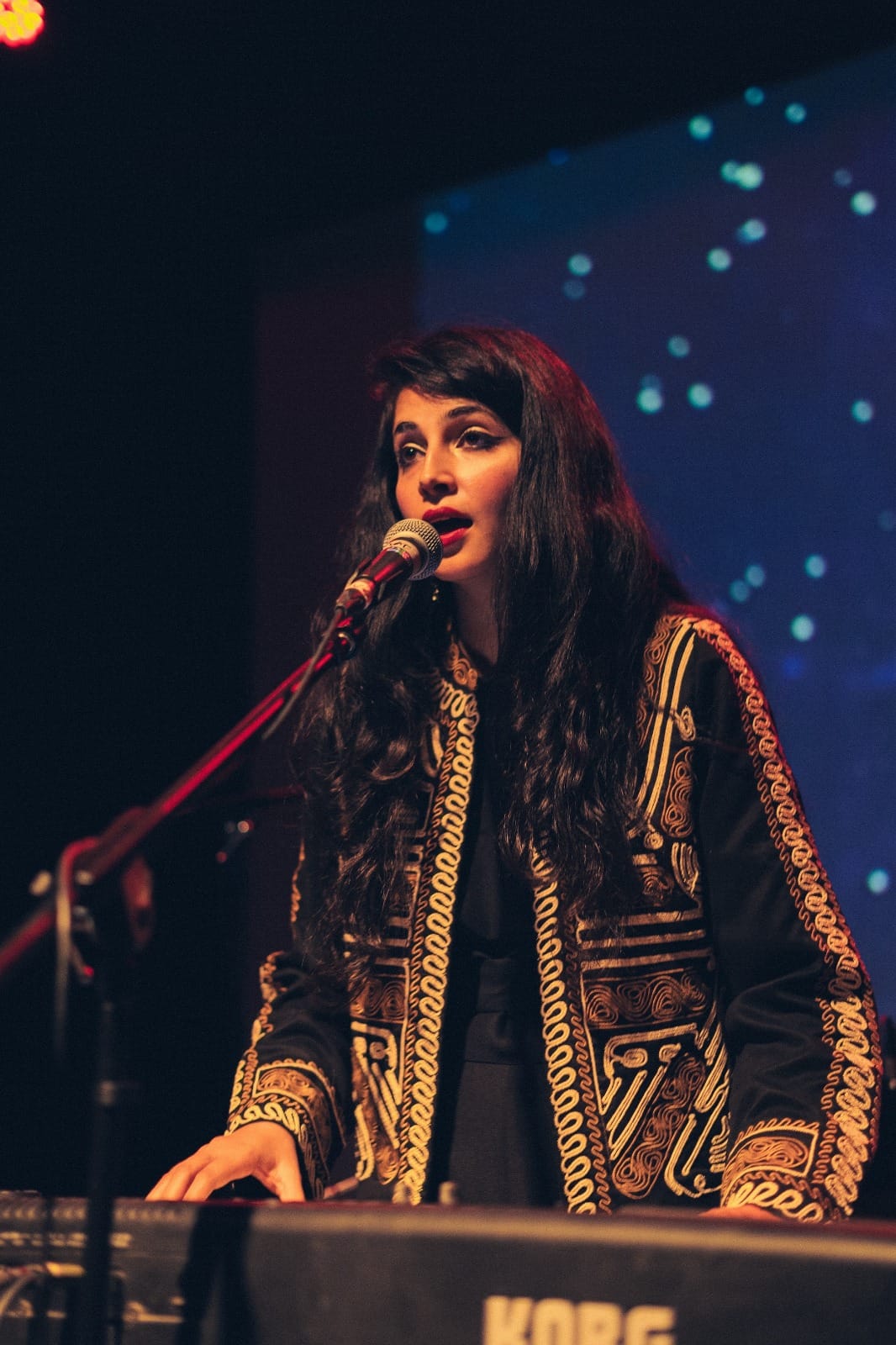Artist Session #10: Sheherazaad (USA) on crafting ethereal soundscapes and reclaiming cultural narratives
Her debut album ‘Qasr’ explores themes of home, displacement, her mother tongue, and imagined homelands as a second-generation immigrant in North America.

Powerful, haunting, and strangely indescribable. These are the first few thoughts that came to me when I heard Sheherazaad’s music for the very first time. It’s unusual to listen to soundscapes like these anymore, and the imagery is something that I was instantly drawn to. While listening to it, I felt like she was making space for my grief through hers, something that you’ll probably understand best only by experiencing it. Born and raised in the San Francisco Bay Area, Sheherazaad is an American Performer-composer who set out on a journey to reclaim her identity and voice by modernizing existing Hindi-Urdu poetic forms mixed with her contemporary voice, which she describes as inherently ‘genre defiant’. Her debut album ‘Qasr’ explores themes of home, displacement, her mother tongue, and imagined homelands as a second-generation immigrant in North America. We got the opportunity to speak to Sheherazaad about the roots of the music she makes, the visual imagery behind it, collaborating with Grammy-winning producer Arooj Aftab on the album, and her attempt at prioritizing the well-being, accessibility, and safe expression of gender-diverse artists in India through the ‘Azaad Sheher’ residency in Mumbai.
Akriti: Can you tell us about your earliest and most cherished memories of music and how that made you want to be a musician?
Sheherazaad: I was born into what I’d describe as a “fanatically art-centered, Asian-American household.” My parents were both band musicians, and my grandmother was a trailblazing Indian classical concert producer. I began ear training at home.

My mother is a very gifted singer, and I’m told I would hum along with her when she carried me in her arms as an infant. Her riaz floated around the household throughout childhood.
At home, I absorbed Lata Mangeshkar's and RD Burman's life portfolios while beginning formal voice education in Jazz and American Songbook from age six.
Mayuyuka: A quick look at your foundations as an artist suggests a desire for the accumulation of knowledge. How central is learning, in all its senses, to you?
Sheherazaad: Composing is an extremely sensorial act for me. I play with scent and sight, taste, and silence, among other things, while creating music. Prayer is deeply important to my process. Spiritual learning and wisdom are most prioritized and revealing to me, within the music and otherwise.

Akriti: I read somewhere you went to film school, and I guess I get a sense of that in your video of ‘Mashoor’. Tell us more about that. What are you trying to communicate with this imagery?
Sheherazaad: I had a very fractured, difficult experience in an American film school, where I was creating things that felt self-exoticizing. My later work now is a reclamation of my narrative and autonomy. Even in my earlier film work, I always gravitated towards visualizing music for the screen. Since I had trained as a Vocalist, Dancer, and Actor early on, my film identity is a result of all the permutations and combinations of these various art forms. I have tended to aspire towards a visual exploration of the South Asian American identity, which always felt definitive and thematic to me early on.

‘Mashoor’ is about the glamour and the dis-ease surrounding the experience of fame. The song is also a larger commentary on the values we are fostering as a world society, where particular people, institutions, or countries are celebrated despite being inherently narcissistic and perverted.
Fittingly, perhaps, the ‘Mashoor’ official video was shot on one of the hottest days that summer, largely in the underground maze of the New York public transit system. New York City felt like an apt metaphor and backdrop for the themes of insanity and institutional narcissism. I sought to visually evoke the dissonance of worlds colliding – brown limbs and gaze projected onto a steely urban labyrinth, attempting to forge a kind of fantastical nostalgia around the South Asian immigrant story within North America’s historical fabric.
Mayuyuka: ‘Qasr’ translates to castle or fortress, right? Is this a response to being a part of the diaspora, a sonic version of laying your roots down where you find yourself? How has being a part of a large diaspora shaped your approach to using references from home?
Sheherazaad: ‘Qasr’ was engendered during a time of family estrangement, grief over a lost elder, and the racial polarisation of my country as I knew it. Arooj actually named the project, which I felt apt. Translating to “castle” or “fortress” in Urdu, Qasr indeed became a monument — like an encapsulation of the real strains of displacement, the push and pull of diaspora, and the depravity of erasure and forgotten roots. But also, it became an intangible home, a personal fortress during a time of personal and political upheaval.
Akriti: Creating spaces for Women and Queer folks is something Hivewire strongly resonates with and amplifies. Can you tell us about the “Azad Sheher Residency” in Mumbai and the reason why you feel there’s a need for more inclusive spaces? What are some barriers to achieving these spaces that you feel need to be addressed?
Sheherazaad: The “Azaad Sheher Residency” was simply an experiment towards the larger project of defining spaces that prioritize the well-being, accessibility, and safe expression of gender-diverse artists in India today. The statistics are abysmal when it comes to looking at who controls and orchestrates today’s landscape of production, distribution and other industry aspects of music in India. There is often the internalized notion that these initiatives are not needed or a kind of inner resistance to the idea of solidarity with and uplifting one another. But I believe we can spark change when we, as gender-diverse artists, support each other and “grow adjacently,” as a wise mentor once worded it to me.
Akriti: Arooj Aftab is one of my favorite artists, and I think her music instantly impacts you. I felt the same way about ‘Qasr’. What was it like working with her on the album and when did this journey begin?
Sheherazaad: I would sporadically drop Arooj love notes for her music over the years. One day, she told me that she’d heard some of the music I’d been releasing and suggested she could produce the next project, to my utter surprise. Perhaps she saw alignment in terms of our positionality as experimental South Asian artists here in the US. She’s such a generous soul, and I’m sure she saw the scope of sharing her wisdom, which she had gleaned painstakingly over the years. The process of working with her was essentially feeling so caught and held, knowing that all the iterations would pass through her shared cultural understanding and raw brilliance.
Mayuyuka: The lyrics of ‘Mashoor’ seem to suggest losing touch with our true selves through self-absorption. Is this a sort of move from the idea of geographic displacement to an existential one?
Sheherazaad: Some threads within ‘Qasr’ can be said to be institutional narcissism, insanity, the violence surrounding language and accents, and beyond. These are all the soundscapes of diaspora, migration, and other experiences I am obsessed with. Perhaps there was an aspiration to create a kind of neo-folklore that strips down mythology, which has been imposed upon my people, namely the model minority trope. Demythologizing, & re-mythologizing, so to speak. I tend not to bother genre-flying the music because I find any attempt on my behalf boring and inaccurate.
Mayuyuka: Considering the weight of the considerations across this mini-album, was it a conscious choice to go for airy, freeingly ethereal soundscapes?
Sheherazaad: Visually and sonically, I typically lean into the perverse, the haunted, then enshrouding this with an aura of romance and desirability. I tend to blend a satirical, hallucinatory feel with elements that are very real and violent. This crescendo leads into the soundscape of merging places and cultures, where the result is often abrasive, dramatic, and illogical. However, the “ethereal” can also lend an aura that enables us to dream, breathe, and imagine. To engender “khwaabistans” (dreamlands) and planets with new realities and truths, where fiction becomes non-fiction.
Check out the HIVEWIRE playlist - The Hive
One 'The Hive' is where our diverse team shares new music and trends from emerging markets. New additions this week:
